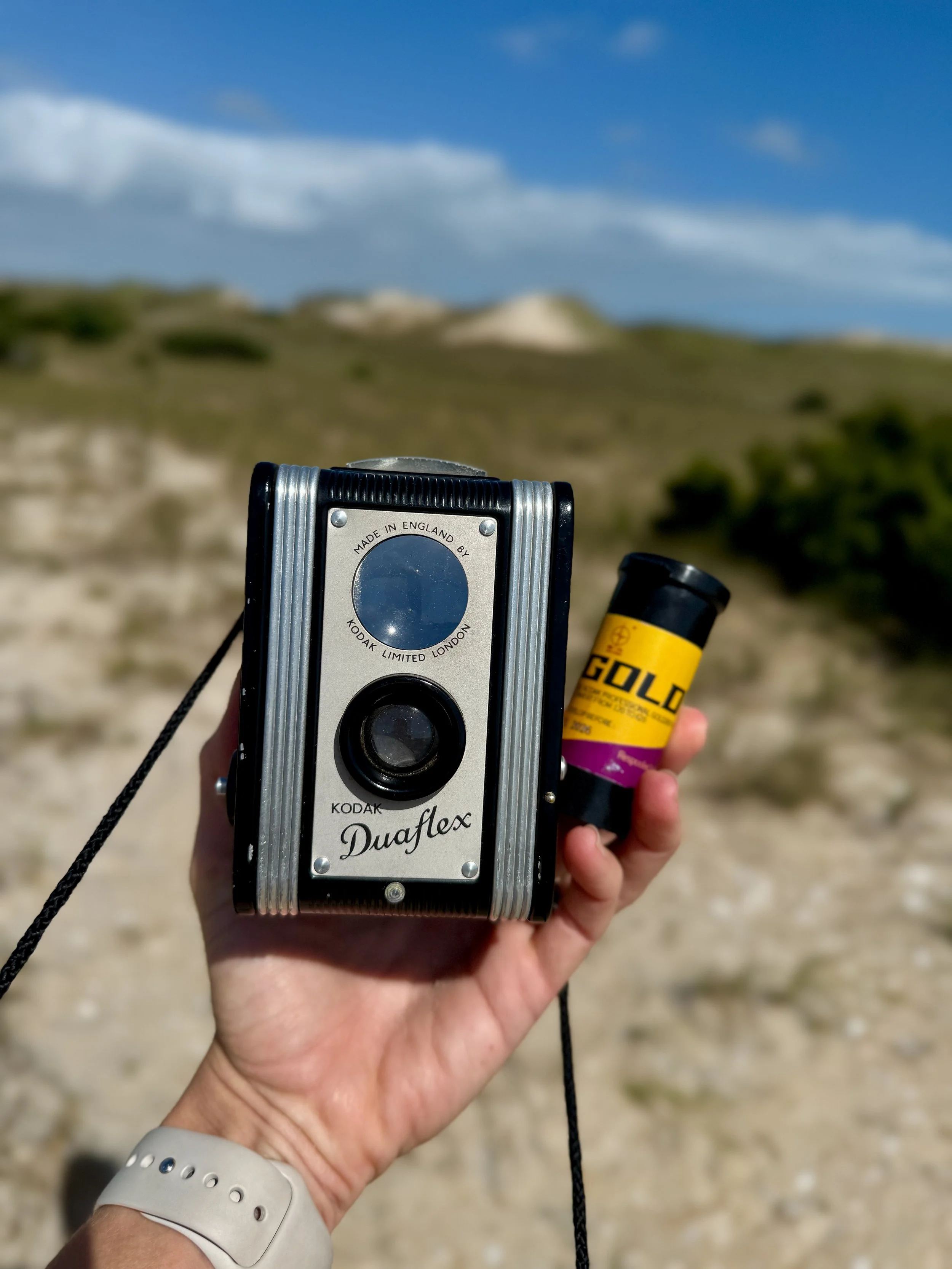12 Months on Film: September — Vintage Vibes on the Outer Banks with the Kodak Duaflex
September brought a completely different vibe to my 12 Months on Film project. After the ultra-wide plastic modern camera of last month, I shifted gears to a camera with a little more history: the Kodak Duaflex. I stumbled upon this mid-century medium format gem at a street market in Zurich this past summer. For only 25 Swiss Francs, I walked away with both a fun souvenir and a piece of history! This camera appears to be the original Duaflex model, which was manufactured by Kodak in London sometime between 1949 and 1955—a fascinating find given the entire Duaflex series was produced globally from 1947 to 1960.
This camera strips away all pretense and complication. It’s known as a "pseudo-TLR" because it has the classic twin-lens body for waist-level viewing but uses a simple, fixed-focus lens. Its technical simplicity is extreme: the shutter speed is fixed at approximately 1/50th of a second and the aperture is fixed at about f/15. This design removes the need for precise technical adjustments, making the shooting a wonderfully simple experience that delivers a dreamy, classic medium format look. I loaded up the Duaflex with a roll of Kodak Gold 120 film that had been rolled onto a 620 spool. I love the characteristic warmth and rich saturation of Kodak Gold, it’s a beautifully reliable film stock.
Spending the fall on the windswept shores of the Outer Banks, September always delivers the combination of lingering summer warmth and wonderfully quiet beaches, allowing for serene and uninterrupted photography. Shooting with the Duaflex is a mindful, intentional process, which I find incredibly rewarding. The composition is done by looking down into the waist-level finder, which flips the image horizontally. It forces you to slow down, truly see the scene, and be deliberate with your framing—a great exercise for any photographer, especially those used to relying on the straighten tool in Lightroom.
Part of the fun of shooting an antique camera is embracing the flaws and the learning curve. You'll notice some color shifts, bold stripes, and funky light leaks running through frames like the dune path and the couple relaxing by the water. This funkiness is part of the vintage process—or, in this case, the unintentional fun of user error! This effect was likely caused by me not turning the film advance dial quite far enough after each shot, causing the frames to bleed into each other and exposing the film's backing paper on the final scan. Rather than being failures, these artifacts simply add a unique, unrepeatable character that you just can’t replicate digitally. The Duaflex captures the iconic, mid-century vibe perfectly, lending a treasured, lost-and-found photo aesthetic to every shot.
I love the way the Kodak Gold rendered our last official beach day- a hot day on ramp 49 in Frisco. The warm, golden colors truly capture the feel of a lingering summer day.
I took the camera with me on a cloudy day trip to Nags Head and stopped by everyone’s favorite signs along the way. The Sea Foam Motel had recently replaced the “0” which had blown off during Hurricane Erin.
The vintage camera proved to be much more than a quirky souvenir. I can see myself pulling this camera off the shelf again and again to capture different scenes with other film stocks. This month was a reminder that photography is about so much more than the latest technology. It’s about the joy of the craft, the story of the equipment, and the unique, imperfect magic that happens when a simple, old camera meets a beautiful subject.
Thanks to Brooktree Film Lab for their beautiful work developing and scanning this roll. They managed to pull all the character and warmth out of the Kodak Gold and handled my user errors with the utmost care, giving these images a life that truly honors the classic Duaflex.
Kodak Duaflex + Gold 200















